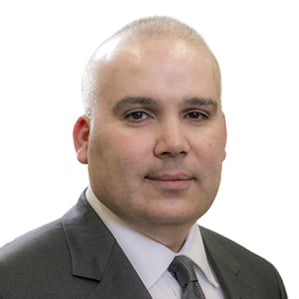Credentials
NACD Directorship Certified®
The premier designation for directors in the United States
Governance Surveys
Directorship Magazine

The average age of CEOs is nearly 60 years of age within the S&P 500. As the average age of CEOs grows older, the average CEO tenure is growing shorter, to about 6.9 years. In this environment, your organization will likely look soon for a replacement, as will many other companies. Are you ready?
Understandably, many companies have been preoccupied with the major economic disruption in the market and may not have invested the time or leveraged the expertise of their board members to focus on effective CEO succession planning.
If you’re not thinking about this topic now, though, you may be in need of a wake-up call, especially in today’s competitive labor market. All signs point to a hiring desert for companies that are unprepared. Some companies are late to the game—but it’s not too late. Boards can act now to ensure their plans are ready to meet the challenges of the future.
The best medicine for healthier succession planning is garnering a deep understanding of what your company needs in a CEO, and that means really getting to know your current CEO and engaging in robust business scenario planning with the CEO and executive team.
Data suggest that many boards of directors are unprepared for engaging in the process of CEO development and succession. A study by The Rock Center for Corporate Governance at Stanford University and Heidrick & Struggles found that only 51 percent of boards can identify their internal successor CEO. Thirty-nine percent say they have zero internal candidates. This isn’t surprising given that when boards do meet to discuss succession planning, they on average only spend 1.14 hours on the topic, according to a separate study by The Rock Center and the Institute of Executive Development.
Robust business scenario planning and CEO succession planning go hand in hand: you can’t have one without the other. Knowing the expected trajectory of the business is a critical ingredient to properly planning for CEO succession.
Being actively involved and engaged in business scenario planning and fully understanding the CEO role critically informs succession planning and ultimately the hiring qualifications of a new CEO. It’s not enough for one or two board members to be immersed, either. Every board member needs to be deeply engaged, applying unique expertise and perspectives to collaborate with the CEO. To know your next CEO is to know your business.
Consider the Impact of a CEO’s Strengths and Weaknesses on the Entire Leadership Team
Another benefit of being actively engaged in scenario and succession planning as a board is that it gives insight into a current CEO’s strengths and weaknesses, and how those characteristics can impact the entire leadership ecosystem. Of course, a key responsibility of the board is holding the CEO accountable, but beyond that, effectively managing a CEO’s performance provides a window into the dynamics of the entire leadership team.
Established plans for accountability, regular engagement with, and offering feedback to the CEO as well as regular performance reviews should be standard practice, but if lacking, consider incorporating them. The enterprise’s performance will likely benefit, and the board will become keenly aware of characteristics they value in the current CEO and would like to see mirrored in future candidates. Trusted relationships with directors and candid conversations are oftentimes the miracle elixir of success. Through this process, blind spots will become evident. Then the board will move to fill these either through thoughtful CEO succession planning or influencing key complimentary hires on the leadership team surrounding the CEO.
Additionally, thoughtful accountability plans and performance reviews can highlight systemic problems early and, if need be, accelerate succession planning action. Likewise, a current CEO’s strengths can help boards think about the positive characteristics they not only value in the role but also how that should cascade through the organization—and be present in the next CEO.
An organization in 5- or 10-years’ time won’t look the same as today, and neither, probably, should its top executive. The board must understand where the organization is going to determine the type of CEO and level of expertise it will need down the road. Is the business in a growth phase? Planning for an acquisition or a divestiture? Is the market eroding? Are all stakeholders being managed?
Just as scenario planning helps businesses prepare for a variety of market scenarios or disruptors, it is also a critical input to boards to consider the different profiles of CEOs they might need to address those same conditions. The characteristics that make an excellent growth CEO may not be the same as those that make an excellent crisis CEO, after all. Boards should consider tailored succession plans and CEO profiles that align to each of their companies’ critical scenario plans.
Once a board is aligned on what the next CEO should look like, it can turn its attention to translating that profile into a pool of qualified future candidates.
Ideally, the pool consists of both internal and external candidates. The former can be nurtured through robust talent and development programs that identify high-potential leaders and provide them with opportunities and mentorship to build the characteristics and behaviors that will help propel the company to success.
Ensure that you start with robust scenario planning, align the board on key attributes of CEO success, look for blind spots among the leadership team to inform a holistic picture, and instill desired leadership attributes within various levels of the business while simultaneously looking outside the organization for future talent. You should never be caught flat-footed. There should always be a path and plan to a successor for each of the viable scenarios.
Regardless of whether the ultimate successor is chosen from the internal ranks or the market, a board that actively participates and collaborates closely with its current CEO will be well positioned to choose wisely and enable a smooth transition that supports growth and business objectives for the long term.
Alvarez & Marsal is an NACD partner, providing directors with critical and timely information, and perspectives. Alvarez & Marsal is a financial supporter of the NACD.

Richard Holt is a managing director in the Corporate Transformation Services practice at Alvarez & Marsal in Houston.

Amerino Gatti is an executive in the energy sector and independent director on the board of Helix Energy Solutions, and he most recently served as chair of the board and CEO of Team, a provider of integrated specialty industrial services. He spent the first 25 years of his career with Schlumberger in various global roles.